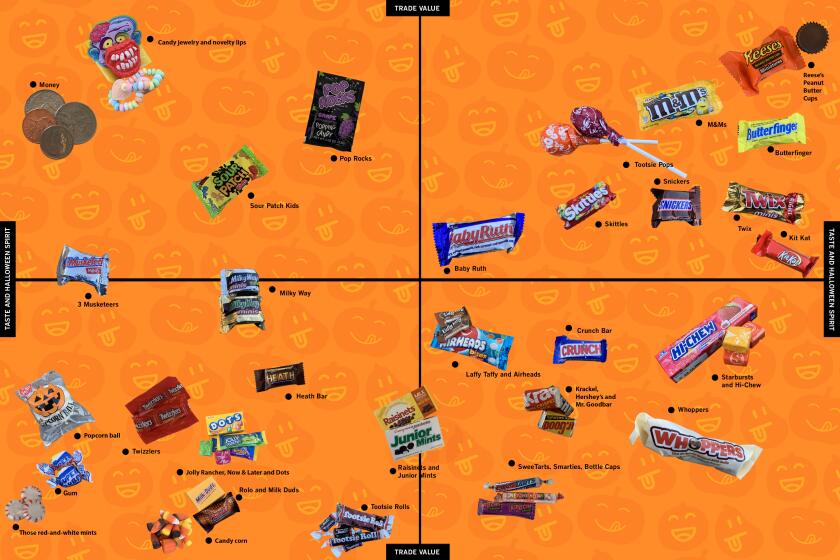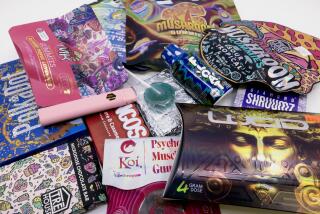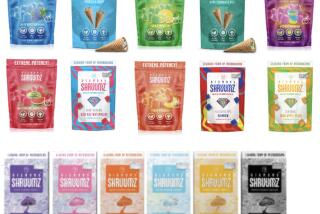Will the pandemic hurt the candy-industrial complex?
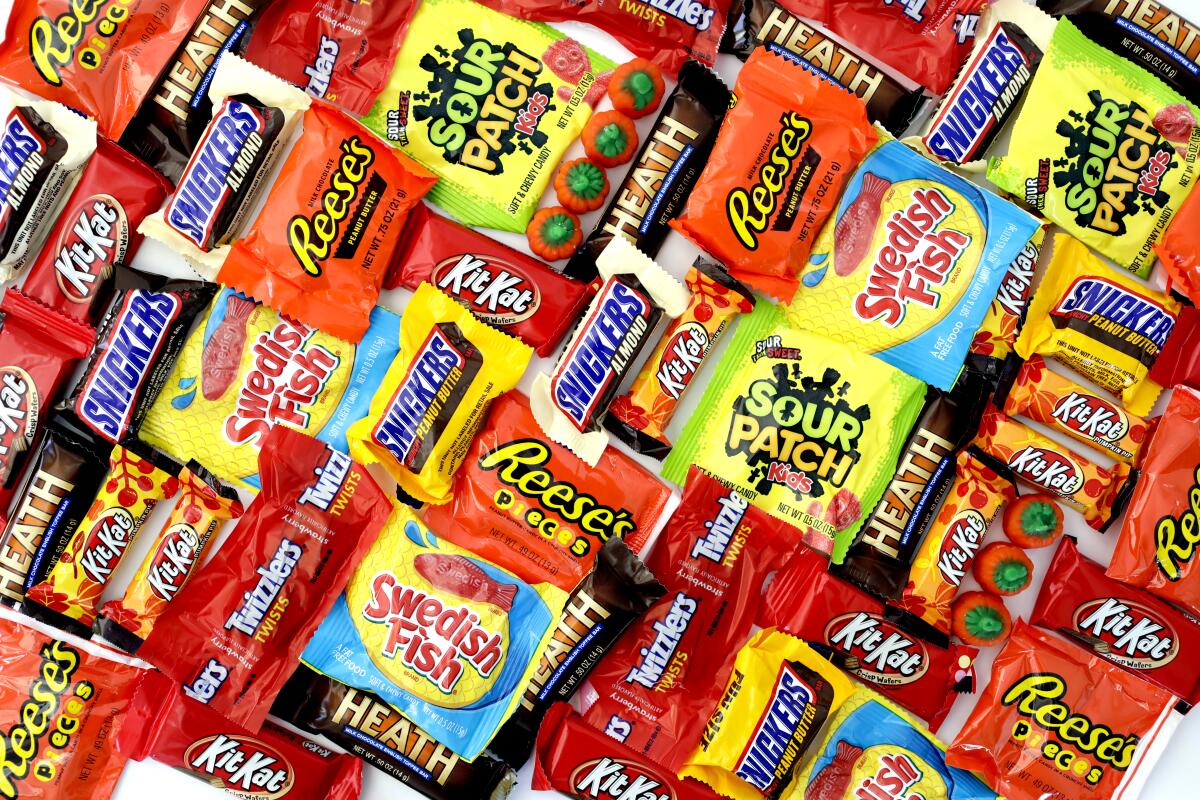
- Share via
Candy writer Crystal Lindell has tromped through cocoa fields in Africa, scoured trade shows in Europe and tasted thousands of new products. But despite having access to the latest and greatest confections on the planet, her go-to favorite is a 90-year-old U.S. candy bar named after a horse.
“I always carry an emergency Snickers in my purse,” says the editor of Candy Industry Magazine. “It’s the perfect ripcord if you’re having a mess of a day.”
Especially during the COVID-19 pandemic. “Chocolate has definitely been my comfort food,” Lindell says.
On that score, she has plenty of company.
Heading into Halloween, traditionally the biggest season of the year with $4.6 billion in sales, U.S. candy consumption seems to be enjoying a COVID-19 bounce, analysts say.
Well, not all candy.
Gum and mint purchases have shriveled nearly 30% as people stay six feet apart, prompting the Hershey Co. to run TV ads urging folks to eat Ice Breakers mints before putting on face coverings, “because mask breath? It’s real.”
And it’s difficult to predict how sales will be affected by health officials in some parts of the country banning haunted house attractions, outlawing parties and warning against trick-or-treating.
Halloween has been “our Super Bowl, Olympics and World Cup wrapped into one,” says Chris Gindlesperger, a spokesman for the National Confectioners Assn., a 600-member trade group of manufacturers, suppliers and brokers.
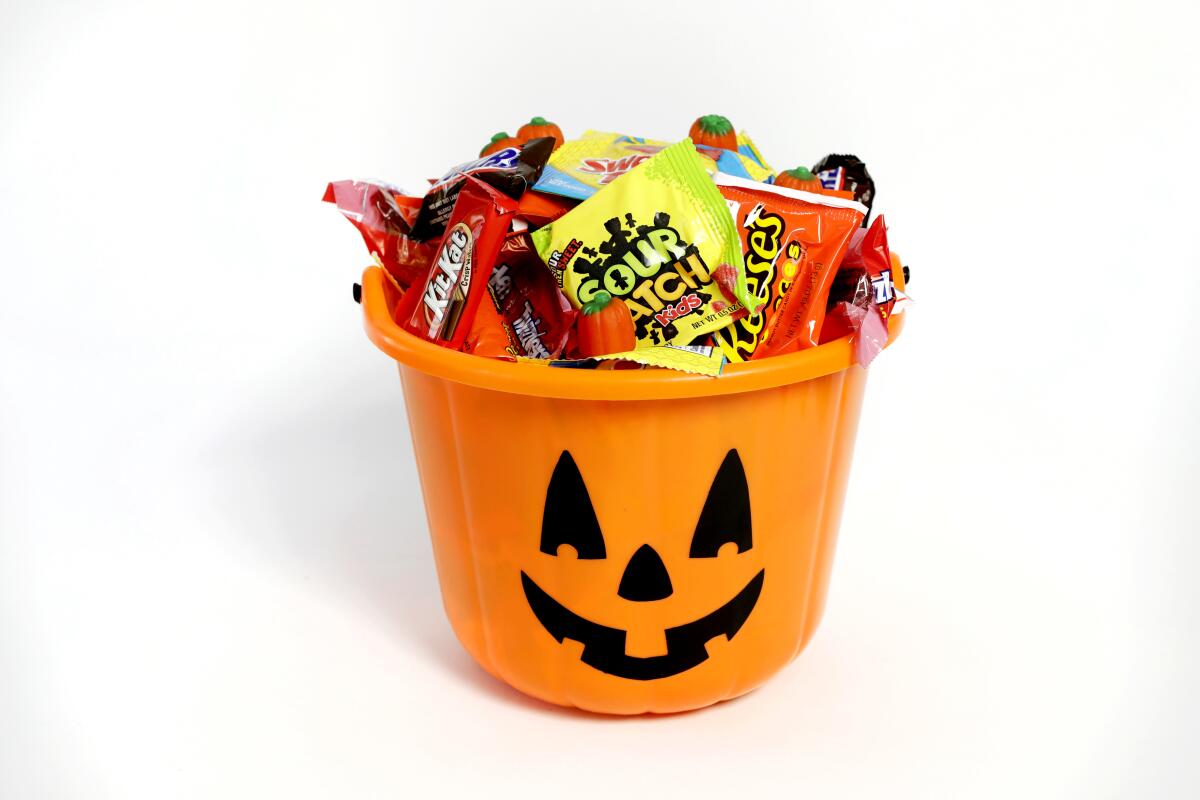
For a long time, chocolate and other sweets have been recession-proof, Lindell says. Whether the $36-billion-a-year industry will also prove pandemic-proof is still unclear. “We won’t really know until after the winter holidays.”
If sales falter, it won’t be for lack of effort.
When pandemic-related closures began in March, candy makers quickly started shifting gears. It was too late to rethink Easter — everything was already “100% shipped,” says Mars Wrigley sales chief Tim LeBel — but Halloween was too vital to leave to fate.
At Mars Wrigley, officials huddled and decided, “We needed a digital alternative to trick-or-treating” in case lockdowns or other restrictions were in place in fall, LeBel says. A smartphone app that was in the works to promote personalized M&M’s was hastily converted into Treat Town, which enables users to hand out and collect virtual candy credits. (As of mid-October, the app had barely topped 50,000 downloads nationwide.)
Mars also revamped its manufacturing operations. Social distancing requirements forced the company to reduce staffing and production at its 13 U.S. candy plants. So, executives dialed down the output of their less popular brands in favor of top-selling Snickers, M&M’s and Twix. But the candy giant still made room for a new treat, M&M’s Chocolate Popcorn, and resurrected last year’s Halloween hit, Zombie Skittles (motto: “Most taste delicious, but some taste like rotten zombie”).
All of your favorite (and not-so-favorite) candy, ranked.
Pandemic shopping patterns, which bolstered online and bulk purchases, spurred Mars to beef up web inventories and churn out more bagged candy.
Elsewhere in candydom, some companies have unveiled novel ways to consume sugar. The Boston America Corp. decided a Chucky doll tin filled with knife-shaped sour cherry candies would be a good idea. Trolli announced Martian Mix Gummi Creations that can be assembled into space aliens in more than 300 flavor combinations. And San Francisco-based Dandelion Chocolate debuted a chiseled chocolate chip engineered by a Tesla designer to “melt more quickly on the palate.”
The oddest newcomer is a spinoff of history’s most polarizing sucrose stepchild: candy corn. In August, Brach’s unleashed Turkey Dinner Candy Corn, a banquet-in-a-bag of tiny triangles that promise flavors such as green beans, cranberry sauce, ginger-glazed carrots and, of course, roasted gobbler.
Chocolate behemoth Hershey opted to thread the PR needle by promoting new seasonal products and safety. For trick-or-treating, it joined forces with Harvard’s Global Health Institute and the Halloween & Costume Assn. on a county-by-county COVID-19 risk level map with corresponding safe activities.
Meanwhile, parents began taking measures into their own hands, rebooting Halloween via clever zip lines, 6-foot tubes and even robots to deliver treats from a safe distance.
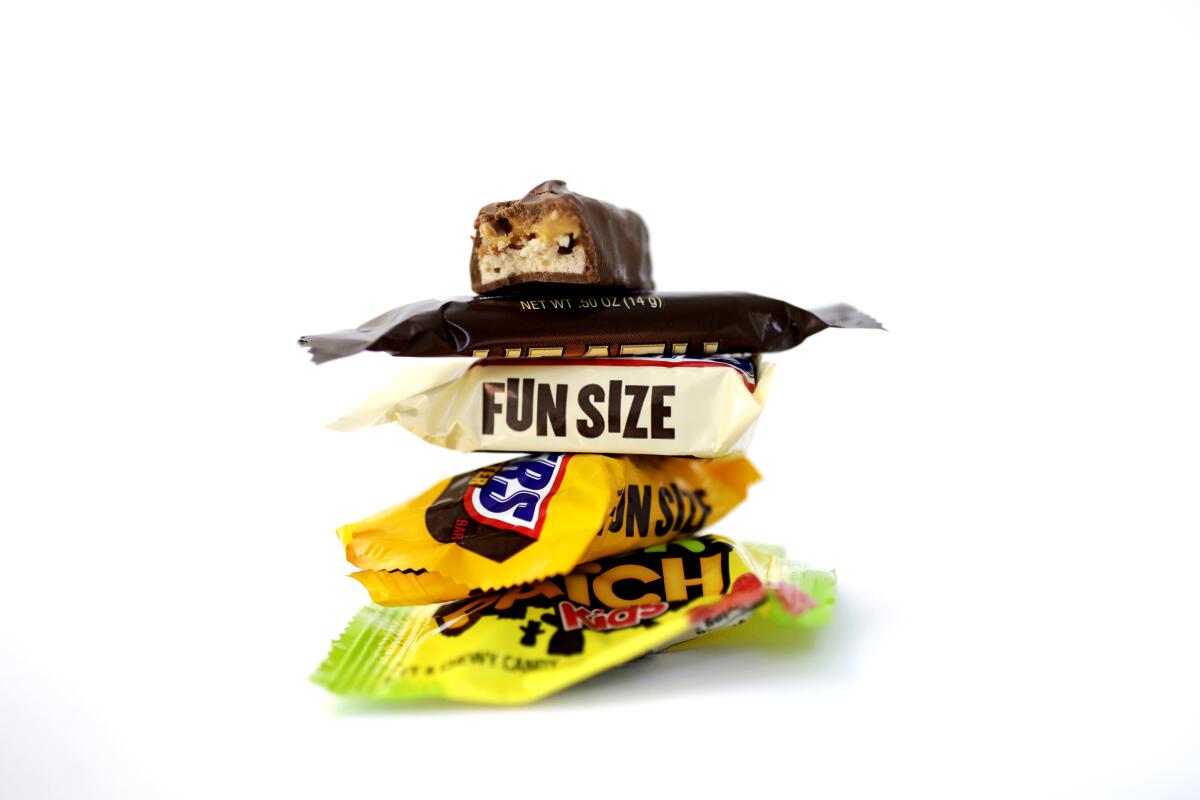
The National Confectioners Assn. likes to point out that U.S. candy sales from late March to early September were 4.1% higher than a year ago, led mainly by chocolate, which accounts for two-thirds of the market.
But part of that growth came from price hikes, according to IRI, a Chicago-based market research firm. And the overall gain obscures the woes of certain categories and brands. Hard candy and Lifesaver-type rolls, for example, slid 11.4%, IRI reports. (On the flip side, curiously, one of the biggest jumps was for caramel apples and dips, up 21% over 2019.)
Industry officials say they are remaining optimistic, anticipating the final holidays of the year. (Hershey has already announced its December product lineup, which includes new Build-a-Santa and Build-a-Snowman candy bars.)
And even if Halloween revenue disappoints, the setback will be short-lived, predicts neuroscientist Rachel Herz. Why? Because nature has the candy industry’s back, she says.
Herz, the author of “Why You Eat What You Eat,” says human beings are wired for sweets: “Newborns will instantly smile when sugar is placed on their tongue.”
The taste of candy signals the brain to release dopamine and endorphins, soothing people physically and emotionally, she adds. Chocolate offers additional painkilling power. It’s no match for Tylenol (don’t have surgery using a Baby Ruth bar for anesthesia, Herz advises), but it’s still potent.
In short, candy offers a quick antidote to pandemic stress, she says. And during tough economic times, it’s “cheaper than retail therapy.”
There’s also the fun factor. Thanks to wacky packaging and names like Goobers, Jaw Busters, Whatchamacallit and Atomic FireBall, eating candy is like consuming a cartoon.
Every year, entrepreneurs large and small roll out hundreds of new products. Trends typically migrate from Europe and Asia to the U.S., not the other way around, said candy journalist Lindell.
One of the biggest sensations she’s seen recently is ruby chocolate, labeled by some as “the fourth chocolate” alongside dark, milk and white. Made from red cocoa beans, the pink-hued confection reportedly tastes like white chocolate with berry undertones.
Also headed our way are items infused with turmeric, matcha tea and floral flavors such as lavender and rose, Lindell says. Vegan ingredients — dairy-free milk chocolate and gelatin-free Skittles, for instance — are also in vogue.
The holy grail is “healthy candy that still tastes like candy,” Lindell says. But that’s easier said than done, so companies are instead promoting natural flavors and colors to create “a health halo.”
Will someone eventually crack the healthful candy conundrum? Consumers of Turkey Dinner Candy Corn may not be too concerned.
More to Read
Eat your way across L.A.
Get our weekly Tasting Notes newsletter for reviews, news and more.
You may occasionally receive promotional content from the Los Angeles Times.
